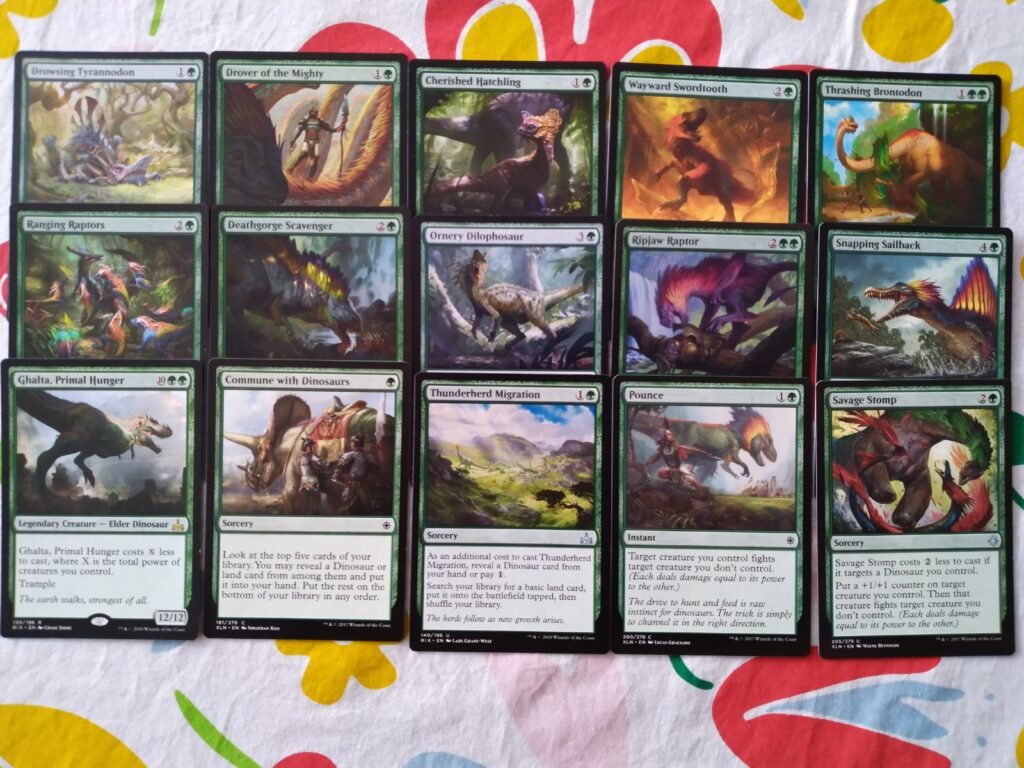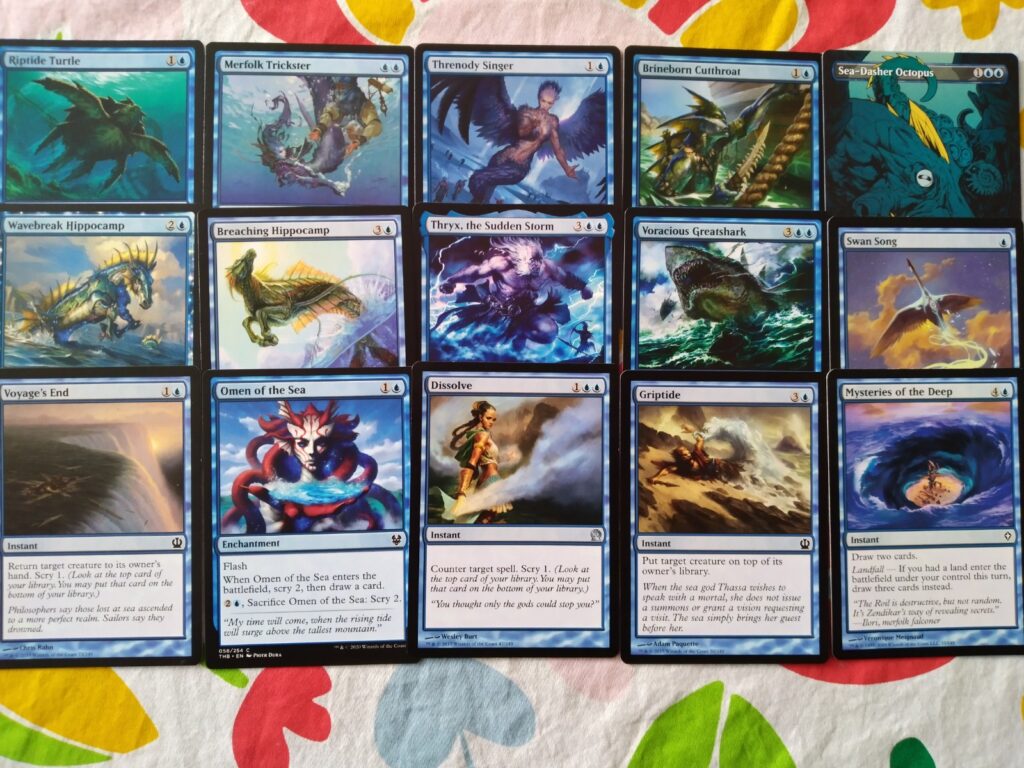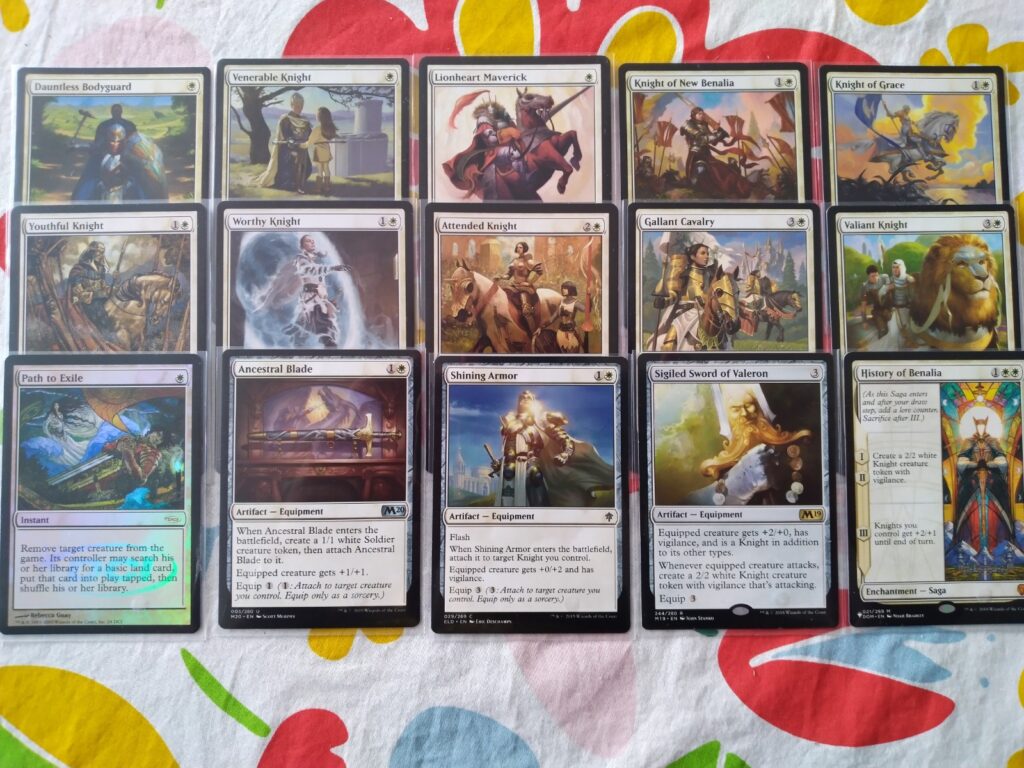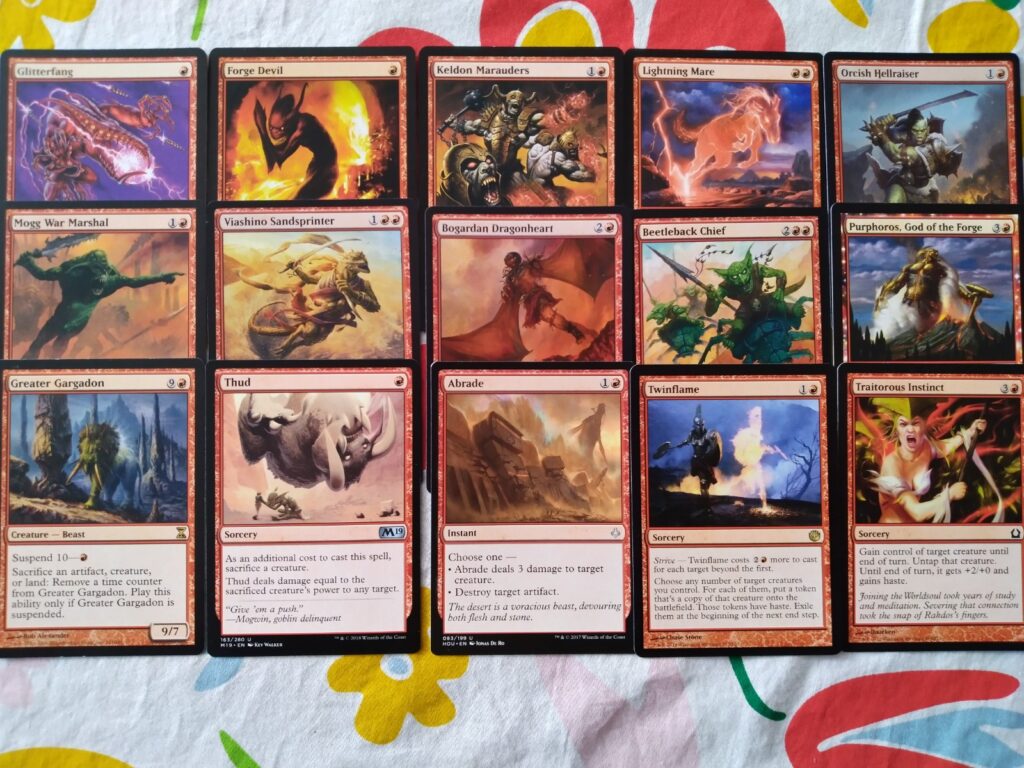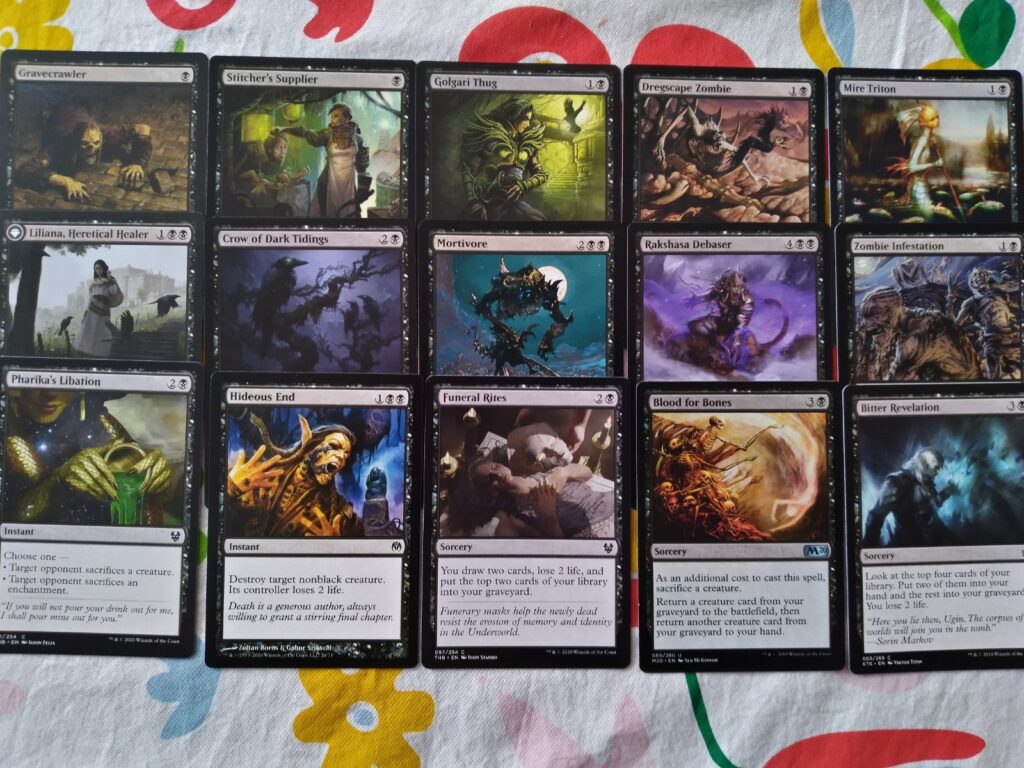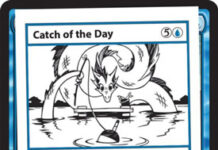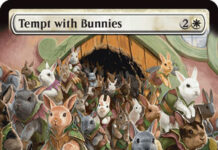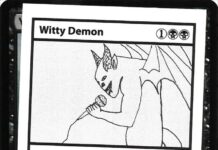A faerie king sits on high, smirking down at the metagame, and instead of a defiant shout, we’re only in a position to respond with distressed elkish bugling. Even when he’s finally banned from the planes, there is no relief. More bannings come in waves, some only a week after the card’s release. Even the pool of unbanned cards narrows further and further, until metagames become a grey wall of the same cards crashing into each other. Brother fights brother, sisters’ sons violate their kinship bond; Garm howls loud in Gnípahellir.
Some hold out hope of a Gem Lea to come: the ephemeral yet ever-present worlds of cube and Commander. And these are indeed bastions of hope amidst the rising chaos, yet not all will find their home there. For one thing, some players are definitely uneasy about the effects of Secret Lair drops on Commander, and even of Commander Legends. And despite Rule Zero offering a way out for those who can make use of it, the vast size of Commander and the consensus among some players about its staples and requirements can be daunting. Cube offers a more customized experience, but that same conventional wisdom sometimes holds that it should only be drafted.
Have you ever wondered why there wasn’t a constructed analog of cube? The idea of curating a card pool is very old, and I get the impression that it’s become particularly tempting in the past year or two as Standard went further and further off the rails. But not everyone wants to draft. Some people enjoy the decisions involved, but others find it stressful. Some want to assemble their deck just once and then be done. If these people also wanted a controlled card pool that doesn’t depend on the cards’ release dates, they were more or less out of luck. That is, until the advent of Jumpstart.*
(*Obviously I can’t guarantee that nobody had a variant that worked like this before. But I never heard about one in all the time I spent on Magic forums, observing e-shouting matches between people who would never meet and had irreconcilably different ideas about how to play Magic.)
Jumpstart is one of those ideas that seems obvious once you know what it is, even if it didn’t occur to many people. I admit that it came as somewhat of a surprise to me, as I never actually played Smash Up. But since it’s here now, there’s no reason we shouldn’t take it and run with it in any direction as we want, as far as we want. I’ve tried it, mostly with the default deck halves, and it’s the most fun I’ve had playing Magic in a long time. It also lends itself to homebrewing, some of which you may have seen. A lot of the homebrews out there closely follow the pattern set by Wizards of the Coast, but as always happens in Magic, you don’t actually have to follow that pattern. You can use a different composition, and a different power level – and this might just be enough to save casual constructed. Yes, I would go that far.
This is what you do:
Step 1 – Look at Gavin Verhey’s “How to Build Your Own Jumpstart Booster Pack!” post. Although that exact post was about making a meme-ish Jumpstart deck half based on your own personality, it also illuminates the basic design decisions that go into the official Jumpstart format. This is important to know, because of . . .
Step 2 – Play some games with conventional Jumpstart boosters, either the ones made by Wizards of the Coast or some you made yourselves using the same guidelines. You need to learn how the conventional boosters feel in terms of construction, and also how they feel to you. Are they the right size in terms of number of cards? Do they have the amount of variety you want? Do they have the power level you want?
Wizards of the Coast’s Jumpstart decks approximate the draft or sealed formats for Standard-legal expansions, which is a little lower power than I usually like. But a constructed format like Modern or Legacy (or Standard with Oko or Omnath) is too powerful for my taste. I like the kind of format where good cards that don’t see play in tournaments are nonetheless good. You will undoubtedly find your own position on the continuum.
I decided that the conventional deck half of 20 cards, about 12 spells and 8 lands, felt kind of small. I went up to 25, with 15 spells and 10 lands, which adds a little more room to deepen themes and include useful cards.
Step 3 – Consider your design philosophy for making deck halves. Do you want to make them with a theme or flavor element in mind, or with mechanical functions in mind? If you choose theme or flavor, you might make deck halves where every creature is the same type and the other spells support their shared characteristics; or where all the cards come from the same set, plane, guild, clan, etc; or perhaps something even more divorced from gameplay, such as a shared artist or a meta-concept like “Cute But Deadly”. If you choose mechanical functions, the deck halves might be variations on strategic concepts like aggro, control, ramp, or tempo. Combo is hard when half of your deck can vary from game to game, but if you broaden the definition to include synergy, it might be easier; for example, cards that look for creatures coming into play or dying will likely find friends in many different combinations.
Speaking of which, the Jumpstart gameplay method does call for any deck half to be more or less playable with any other one. This is essential for the official format’s draft experience, and I also endorse it for homebrewing. One of the points of Jumpstart homebrews is to take pressure off of deckbuilders, and you and your friends will have more fun with your deck halves if you don’t have to worry about whether your deck will shoot itself in the foot too much. If your group knows the deck halves’ contents ahead of time, this will also create a less time-consuming version of metagaming for tournaments. Do you pick one that gives you more versatile answers but fewer or weaker creatures than any other deck half? Do you want to combine two whose contents create pedal-to-the-metal aggro and not even think about drawing extra cards?
Most Jumpstart deck halves are mono-colored. I actually find this refreshing, because it feels like almost every set has multicolored cards and multilands in it. Not only do we rarely see basic lands and their beautiful art in tournaments and optimized Commander lists, multicolor is beginning to feel – dare I even say it? – less special. Of course, Rule Zero applies everywhere, and if your group is interested in such things, I’ve seen attempts to make more functional versions of the official “Rainbow” booster, which I hear is one of the weakest in the Jumpstart release and benefits from editing. Cards like Quirion Dryad might do well in that space, as might easy-to-cast and generally-useful cards like Mourning Thrull and Proud Wildbonder.
Step 4 – Make more deck halves of your own, as many as you need to cover the themes you like best and to give your group a varied and interesting experience. The considerations for the overarching card pool will be similar to making a cube, as will the playtesting you do to learn about the interactions between the cards you’ve selected. But ideally, once you’re done, you have a cube-like collection that offers a fast and easy experience, without the elements of draft that might unduly devour people’s time and the elements of casual constructed that might unduly devour people’s mental energy.
I started on this project to preserve the moderate power level and casually good and/or fairly-designed cards that I love so much. While it’s not the only place these things can exist, nor the only place that the way you want to play can exist, I truly believe that it is a powerful and effective one in a busy and often stressful world. My Jumpstart cube is still in progress, but I’ll share some of my favorites from the deck halves I’ve made so far. I hope they inspire you to do this, or something else, whatever will preserve the style of gameplay you love best. As always, a picture is worth a thousand words, so feast your eyes:

